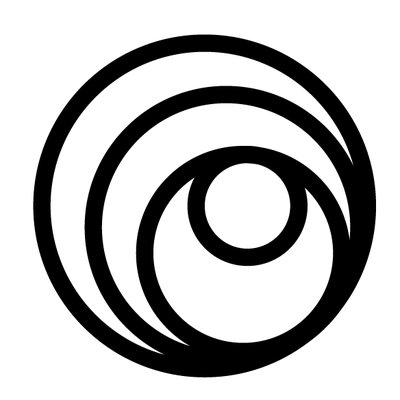Navigating Higher Education: A Case Study on the Academic Journey of a Deaf Student in the Philippines
DOI:
https://doi.org/10.69569/jip.2025.654Keywords:
Deaf student, Hard of hearing, Inclusive education, Persons with disabilities, Universal design for learningAbstract
This qualitative case study investigates the academic experiences of a deaf student enrolled in a teacher education program at a state university in Bohol, Philippines. It addresses a research gap on how deaf learners navigate higher education. Data were gathered through in-depth interviews with nine informants: the student, parents, peers, and teachers across different educational levels. Using Braun and Clarke’s thematic analysis, four themes emerged: (1) intrinsic motivation and identity, (2) academic coping strategies, (3) social and environmental support, and (4) structural and social barriers. Results show that personal drive, spiritual beliefs, and family aspirations supported the student’s persistence. Visual learning, lip-reading, and independent study were key strategies for overcoming communication challenges. Support from peers, family, and inclusive teaching practices reinforced both emotional and academic progress. Despite these strengths, barriers such as limited faculty adjustments and social stigma remain. The study recommends the use of Universal Design for Learning (UDL), assistive technologies, peer-support systems, and faculty training to improve inclusion. By presenting the lived experience of a deaf student, the study contributes practical insights to strengthen equity and accessibility in higher education.
Downloads
References
Alsalem, A., & Alzahrani, T. (2023). The role of institutional practice in promoting inclusive education for deaf and hard-of-hearing students: A critical analysis. SAGE Open. https://doi.org/10.1177/21582440231203435
Anwar, M., Raz, S., & Mahmood, S. (2023). Use of stress coping strategies among students with hearing impairment: A gendered-comparative study. Global Sociological Review, 8(1), 270–279. https://doi.org/10.31703/gsr.2023(VIII-I).26
Bartolo, P. A., Borg, M., Callus, A. -M., Camilleri, L., De Gaetano, A., Mangiafico, M., Mazzacano D’Amato, E., Sammut, C., Vella Vidal, R., & Vincent, J. (2025). Students with disabilities in higher education call for personal empowerment, equitable, inclusive systems, and individualized accommodations. Frontiers in Education, 10, 1432682. https://doi.org/10.3389/feduc.2025.1432682
Barmola, K. C. (2016). Spirituality and motivation of college students. The International Journal of Indian Psychology, 3(2), 182–192. https://tinyurl.com/39ebk3jx
Benedict, K. M., Rivera, M. C., & Antia, S. D. (2015). Instruction in metacognitive strategies to increase deaf and hard-of-hearing students’ reading comprehension. Journal of Deaf Studies and Deaf Education, 20(1), 1–15. https://doi.org/10.1093/deafed/enu026
Braun, V., & Clarke, V. (2006). Using thematic analysis in psychology. Qualitative Research in Psychology, 3(2), 77–101. https://doi.org/10.1191/1478088706qp063oa
Carter, E. W., Moss, C. K., Asmus, J., Fesperman, E., Cooney, M., Brock, M. E., Lyons, G., Huber, H. B., & Vincent, L. B. (2015). Promoting inclusion, social connections, and learning through peer support arrangements. Teaching Exceptional Children, 48(1), 9–18. https://doi.org/10.1177/0040059915594784
CAST. (2024). Universal design for learning guidelines (version 3.0). https://udlguidelines.cast.org/
Chen, T., Xu, K., Luo, L., & Chen, Y. (2024). A longitudinal study on the impact of perceived stress on academic engagement among deaf college students: The moderating effect of positive emotions. Frontiers in Psychology, 15, 1475388. https://doi.org/10.3389/fpsyg.2024.1475388
Cheng, S., Cheng, H., Su, S., Ming, L., Masud, S., Wang, Q., & Huang, Y. (2024). Motion design principles for accessible video-based learning: Addressing cognitive challenges for deaf and hard-of-hearing learners. arXiv. https://arxiv.org/abs/2410.00196
European Disability Forum. (2024). Human rights report 2024: Legal capacity—Personal choice and control. https://tinyurl.com/2sv84vrv
Griffin, M. M., Fisher, M. H., Lane, L. A., & Morin, L. (2019). In their own words: Perceptions and experiences of bullying among individuals with intellectual and developmental disabilities. Intellectual and Developmental Disabilities, 57(1), 66–74. https://doi.org/10.1352/1934-9556-57.1.66
Jambor, E. D., & Elliott, M. (2005). Self-esteem and coping strategies among deaf students. Journal of Deaf Studies and Deaf Education, 10(1), 63–81. https://doi.org/10.1093/deafed/eni004
Kamberi, M. (2025). Types of intrinsic motivation as predictors of academic achievement: The mediating role of deep learning strategy. Cogent Education, 12, 2482482. https://doi.org/10.1080/2331186X.2025.2482482
Khomera, S. W., Fayiah, M., & Gwayi, S. (2020). Challenges faced by learners with hearing impairments in a special school environment: A case study of Embangweni Primary School for the Deaf, Mzimba District, Malawi. World Journal of Vocational Education and Training, 2(1), 21–36.
Kisanga, S. (2020). Barriers to learning faced by students who are deaf and hard of hearing in higher education institutions in Tanzania. Papers in Education and Development.
Lund, E. M., & Ross, S. W. (2016). Peer victimization in students who are deaf and hard of hearing: Exploring educational placement. JADARA, 50(2), 20–44. https://nsuworks.nova.edu/jadara/vol50/iss2/1
Macaulay, L., Webber, W., & Fraunholz, B. (2023). Successful university students from low socio-economic backgrounds’ perspectives on their academic success: A capital-based approach. Higher Education Research & Development, 42(6), 1237–1251. https://doi.org/10.1080/07294360.2023.2197191
Malado, D. M. (2024). Deaf learners’ academic and social difficulties and coping mechanisms in Ethiopian elementary schools. Discover Education, 3(1), 77. https://doi.org/10.1007/s44217-024-00151-5
Marschark, M., & Knoors, H. (Eds.). (2020). The Oxford handbook of deaf studies in learning and cognition. Oxford University Press. https://tinyurl.com/mrjtffs3
Marschark, M., Leigh, G., Sapere, P., Burnham, D., Convertino, C., Stinson, M., Knoors, H., Vervloed, M. P. J., & Noble, W. (2006). Benefits of sign language interpreting and text alternatives for deaf students’ classroom learning. Journal of Deaf Studies and Deaf Education, 11(4), 421–437. https://doi.org/10.1093/deafed/enl013
McLeskey, J., Waldron, N. L., Spooner, F., & Algozzine, B. (2021). Handbook of effective inclusive elementary schools: Research and practice (2nd ed.). Routledge.
Millett, P. (2021). Accuracy of speech-to-text captioning for students who are deaf or hard of hearing. Journal of Educational, Pediatric & (Re)Habilitative Audiology, 29(1), Article 2. https://www.edaud.org/journal/2021/1-article-21.pdf
Olszak, M., & Borowicz, A. (2025). Learning strategies of deaf and hard-of-hearing students in mainstream education. European Journal of Special Needs Education. Advance Online Publication.
Rose, C. A., & Gage, N. A. (2017). Exploring the involvement of bullying among students with disabilities over time. Exceptional Children, 83(3), 298–314. https://doi.org/10.1177/0014402916667587
Rose, D. H., Gravel, J. W., & Gordon, D. (2024). Universal design for learning: Theory and practice (2nd ed.). CAST Publishing.
Sambu, M. C., Otube, N., & Bunyasi, B. A. (2018). Assessment of academic performance of learners with hearing impairment in selected special primary schools in Kenya. International Journal of Education and Research, 6(2).
Singal, N., Kwok, P., & Wijesinghe, T. (2024). Being a teacher with disabilities: Perspectives, practices and opportunities. British Council. https://www.britishcouncil.org/
Smeets, E., & Roeleveld, J. (2016). The identification by teachers of special educational needs in primary school pupils and factors associated with referral to special education. European Journal of Special Needs Education, 31(4), 423–439. https://doi.org/10.1080/08856257.2016.1187879
Soetan, A. K., Onojah, A. O., Alaka, A. N., & Aderogba, S. A. (2020). Assistive technologies and academic performance of hearing-impaired students in Nigeria. Nigerian Journal of Educational Technology, 14(1), 23–34.
Suyatno, S., Wantini, W., & Patimah. (2024). Intrinsic motivation of Gen Z to be a teacher in elementary school. Futurity Education, 4(3). https://doi.org/10.57125/FED.2024.09.25.10
Tompsett, J., & Knoester, C. (2023). Family socio-economic status and college attendance: A consideration of individual-level and school-level pathways. PLOS ONE, 18(4), e0284188. https://doi.org/10.1371/journal.pone.0284188S
United Nations. (2024, December 3). International day of persons with disabilities. https://tinyurl.com/2s43e4zs
U.S. Department of Education, & U.S. Department of Health and Human Services. (2023). Policy statement on inclusion of children with disabilities in early childhood programs (updated November 2023). https://tinyurl.com/4y4hbdk5
Zhu, Y., Zhang, J., Zhang, Z., Clepper, G., & Jia, J. (2022). Designing an interactive communication assistance system for hearing-impaired college students based on gesture recognition and representation. MDPI Journal
Downloads
Published
How to Cite
Issue
Section
License
Copyright (c) 2025 Journal of Interdisciplinary Perspectives

This work is licensed under a Creative Commons Attribution-NonCommercial 4.0 International License.









